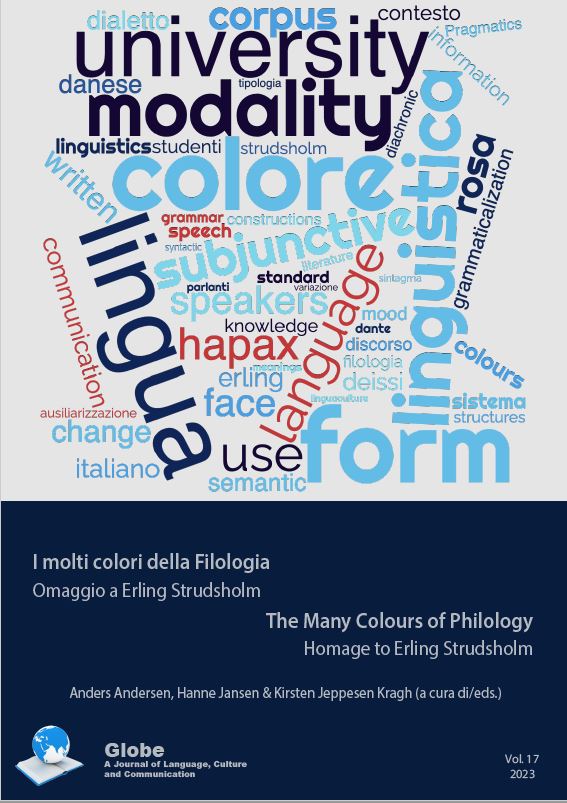The perfect participle and the supine in two chronolects of Danish
DOI:
https://doi.org/10.54337/ojs.globe.v17i.8197Resumen
Modern Standard Danish distinguishes between a perfect participle and a supine. The perfect participle is an adnominal non-finite form of the verb, ascribing properties to a referent (as do the prototypical adjectives) and morpho-syntactically agreeing with this referent. The supine is an indeclinable non-finite form of a verb, ending in -t, used as a component in periphrastic verb forms. Outside the attributive position, the perfect participle is used in complement constructions with the copula verbs være ‘be’ and blive ‘be’/‘become’; the supine is used in perfective constructions and periphrastic passives with the auxiliaries have ‘have’, få ‘get’, være ‘be’ and blive ‘be’/‘become’. In Modern Standard Danish, the perfect participle has restricted use (it is the marked member of the paradigm perfect participle vs. supine); the supine has a wider domain of usage (it is the unmarked member of the paradigm). In the nineteenth century, this was different. Back then, the perfect participle was the unmarked form with a wide usage domain, whereas the supine had a more restricted use. This paper presents a study of these verb forms in two corpora representing different chronolects of Danish, one corpus consisting of texts from the nineteenth century, one of texts from Modern Standard Danish.
Descargas
Publicado
Número
Sección
Licencia
Articles published in Globe: A Journal of Language, Culture and Communication are following the license Creative Commons Attribution-NonCommercial-NoDerivs 3.0 Unported (CC BY-NC-ND 3.0). Authors retain copyright and grant the journal right of first publication with the work simultaneously licensed under a Creative Commons Attribution License: Attribution - NonCommercial - NoDerivs (by-nc-nd). Further information about Creative Commons


